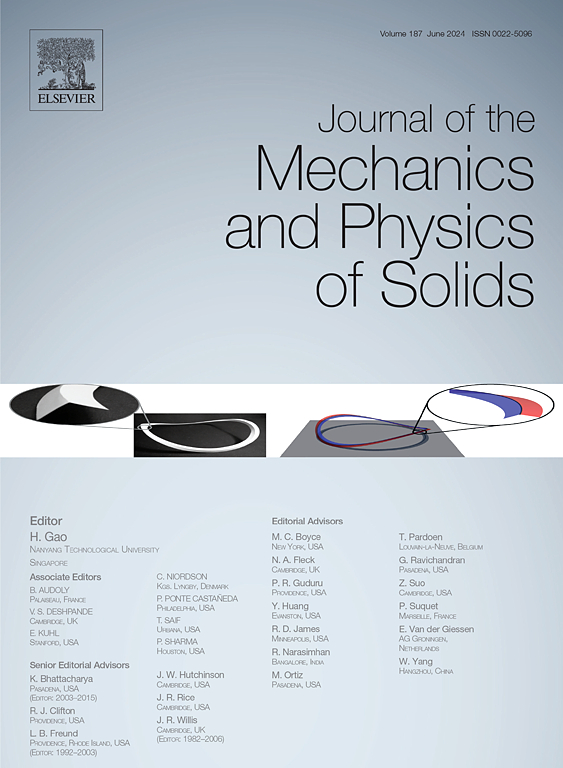Parthenocissus tricuspidata tendril: A mechanically robust structural design with multiple functions
IF 5
2区 工程技术
Q2 MATERIALS SCIENCE, MULTIDISCIPLINARY
引用次数: 0
Abstract
Through an array of spatially distributed tendril pads, Parthenocissus tricuspidata adheres itself firmly to the surfaces of targets such as trees and walls. The tendril pads, which form unique and intriguing layouts, play a critical role in supporting plant organs. However, the relationship between their geometric forms and mechanical properties remains inadequately understood. In this paper, we combine experimental measurement, theoretical analysis, and numerical simulation to decipher the morphomechanics of P. tricuspidata tendrils. The structural geometry and load-bearing capability of the tendrils were measured. A structural mechanics model, supported by finite element simulations, is proposed to analyze the properties of different tendril layouts. The results show that the gradually narrowing distribution of the pads and the zigzag pattern of the main axis synergistically make the tendrils a comprehensively excellent mechanical design. The tendrils can simultaneously achieve superb mechanical robustness, outstanding load-bearing capability, and high efficiency of material usage. We develop an optimization method, and find that the optimized tendril layout is similar to the real one. It is also revealed that the real pad distribution renders a flaw-insensitive design. As their branchlets or pads are partly broken, the tendrils can still effectively accommodate external forces in different directions, and their structural stiffnesses do not change significantly. This work not only deepens our understanding of the structure–property–function interrelations of P. tricuspidata tendrils, but also provides inspirations for the design of, e.g., high-performance suspended cables.

求助全文
约1分钟内获得全文
求助全文
来源期刊
CiteScore
9.80
自引率
9.40%
发文量
276
审稿时长
52 days
期刊介绍:
The aim of Journal of The Mechanics and Physics of Solids is to publish research of the highest quality and of lasting significance on the mechanics of solids. The scope is broad, from fundamental concepts in mechanics to the analysis of novel phenomena and applications. Solids are interpreted broadly to include both hard and soft materials as well as natural and synthetic structures. The approach can be theoretical, experimental or computational.This research activity sits within engineering science and the allied areas of applied mathematics, materials science, bio-mechanics, applied physics, and geophysics.
The Journal was founded in 1952 by Rodney Hill, who was its Editor-in-Chief until 1968. The topics of interest to the Journal evolve with developments in the subject but its basic ethos remains the same: to publish research of the highest quality relating to the mechanics of solids. Thus, emphasis is placed on the development of fundamental concepts of mechanics and novel applications of these concepts based on theoretical, experimental or computational approaches, drawing upon the various branches of engineering science and the allied areas within applied mathematics, materials science, structural engineering, applied physics, and geophysics.
The main purpose of the Journal is to foster scientific understanding of the processes of deformation and mechanical failure of all solid materials, both technological and natural, and the connections between these processes and their underlying physical mechanisms. In this sense, the content of the Journal should reflect the current state of the discipline in analysis, experimental observation, and numerical simulation. In the interest of achieving this goal, authors are encouraged to consider the significance of their contributions for the field of mechanics and the implications of their results, in addition to describing the details of their work.

 求助内容:
求助内容: 应助结果提醒方式:
应助结果提醒方式:


